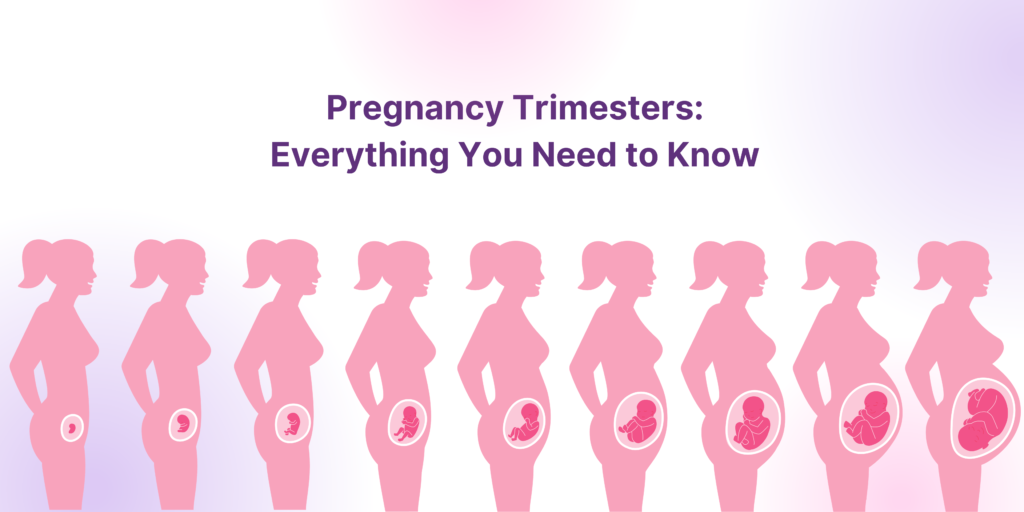Innovative Approaches To Manage Second Trimester Discomfort


The second trimester of pregnancy, referred to as the “honeymoon phase,” can bring its share of discomfort as the body continues to adapt to the growing fetus. Common issues during this period include back pain, leg cramps, and heartburn, which can affect a woman’s daily routine and quality of life. While these discomforts are less severe than in the first and third trimesters, finding ways to manage them is crucial for maintaining overall health and well-being. Innovative approaches such as prenatal yoga, specialized exercises, and dietary adjustments have shown to be highly beneficial to manage second trimester discomfort. Additionally, including relaxation techniques can also effectively reduce these symptoms.
Embracing comfort in the second trimester involves both physical and emotional care. It is about listening to the body’s needs and responding with gentle, nurturing practices. The article will explore various methods to manage second-trimester discomforts. It will emphasize the importance of a holistic approach that includes lifestyle modifications, supportive therapies, and self-care practices. By adopting these innovative strategies, expectant mothers can navigate this phase with greater ease, setting the stage for a healthy and enjoyable pregnancy journey.
1. Introduction
a. The Transformative Second Trimester
The second trimester of pregnancy is often hailed as a time of increased energy and reduced nausea. However, it comes with its own set of discomforts. This article explores innovative approaches to manage second-trimester discomfort, focusing on holistic strategies for the well-being of expectant mothers.
b. The Importance of Holistic Comfort
Recognizing the interconnected nature of physical and emotional well-being during pregnancy is essential. Holistic approaches consider the multifaceted experiences of expectant mothers, offering innovative solutions to reduce discomfort and enhance overall pregnancy satisfaction.
2.Addressing Muscular and Skeletal Changes
a. Muscle Strain and Back Pain
The growing belly during the second trimester can strain muscles, leading to back pain. Approaches to manage second trimester discomfort include gentle prenatal exercises, such as yoga and swimming, to strengthen core muscles. These activities promote flexibility and reduce strain, contributing to a more comfortable pregnancy.
b. Orthopedic Support and Pregnancy Pillows
Orthopedic supports, such as belly bands, provide structural support to the abdomen, relieving pressure on the lower back. Pregnancy pillows offer customized comfort during sleep, reducing discomfort associated with spinal alignment. Integrating these supportive tools enhances overall musculoskeletal well-being.
3. Tackling Digestive Discomfort
a. Heartburn and Acid Reflux
As the uterus expands, it can exert pressure on the stomach, leading to heartburn and acid reflux. Managing second trimester discomfort involves dietary adjustments, including smaller, more frequent meals and avoiding trigger foods. Probiotics and digestive enzymes also offer relief, fostering a more comfortable digestive experience.
b. Mindful Eating Practices
Including mindful eating practices, such as chewing food slowly and avoiding large meals close to bedtime, supports digestion. These practices reduce discomfort and promote nutritional absorption, positively impacting the mother and baby during this critical development phase.
4. Balancing Hormonal Changes
a. Hormonal Fluctuations and Emotional Well-being
Hormonal changes during the second trimester can influence emotional well-being. Mindfulness techniques, such as meditation and deep breathing exercises, are innovative approaches to manage second-trimester discomfort. They aim to balance hormonal fluctuations during this stage of pregnancy. These practices build emotional resilience, promoting a positive pregnancy experience.
b. Hormone-regulating Activities
Engaging in hormone-regulating activities, such as moderate exercise and adequate sleep, contributes to emotional stability. These activities release endorphins, reducing stress and anxiety. Including these innovative approaches enhances hormonal equilibrium, positively impacting the overall well-being of expectant mothers.
5. Enhancing Sleep Quality
a. Sleep Challenges and Fatigue
Sleep disturbances, common during pregnancy, can lead to increased fatigue. Managing second-trimester discomfort involve establishing a consistent sleep routine and creating a comfortable sleep environment. Techniques like prenatal massage and relaxation exercises promote better sleep quality, reducing fatigue.
Also read: Second Trimester Energy Boost And Reduced Symptoms
b. Pregnancy-friendly Sleep Accessories
Investing in pregnancy-specific sleep accessories, such as body pillows and mattresses designed for optimal support, improves sleep posture. These accessories reduce pressure points and enhance spinal alignment, addressing discomforts that can hinder restful sleep during the second trimester.
6. Alleviating Swelling and Fluid Retention
a. Edema and Circulation Enhancement
Swelling and fluid retention are common concerns, particularly in the lower extremities. Approaches to manage second-trimester discomfort involve activities that enhance circulation, like prenatal exercises and elevation of the legs. These strategies minimize oedema and promote overall vascular health.
b. Hydrotherapy and Compression Wear
Hydrotherapy, such as water aerobics, provides buoyancy that reduces the impact on joints, reducing swelling. Compression wear, like maternity support stockings, helps in maintaining proper blood flow. Combining these approaches supports expectant mothers in managing fluid retention more effectively.
7. Building a Supportive Network
a. Community Connection and Shared Experiences
Creating a supportive network of fellow expectant mothers builds a sense of community. Platforms like online forums, local prenatal classes, and support groups provide spaces for sharing experiences and exploring innovative solutions. Navigating the second trimester becomes more manageable when surrounded by a supportive community.
b. Partner Involvement and Professional Guidance
Involving partners in the pregnancy journey enhances emotional support. Partners can actively participate in innovative approaches like prenatal exercises and relaxation practices. Seeking professional guidance from doctors, nutritionists, and prenatal specialists ensures a personalized and well-informed approach to managing second-trimester discomfort.
The second trimester of pregnancy can be a transformative and sometimes challenging period. Embracing approaches to manage second-trimester discomfort empowers expectant mothers to navigate this phase with resilience and well-being. From musculoskeletal support to emotional balance, including these strategies enhances the overall pregnancy experience, creating a foundation for a healthier and more comfortable journey to motherhood.
- Why Burping Your Newborn After Feeding Is Essential
Burping your newborn may feel like a…Read More
- Itchy Skin During Pregnancy: Causes, Conditions, and Care
Itchy skin is something everyone experiences at…Read More
- Understanding Ovulation Pain: A Comprehensive Guide
Ovulation pain, is a common mid-cycle symptom…Read More



